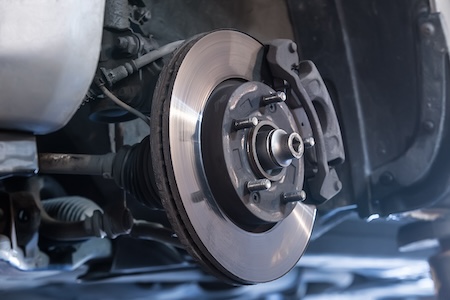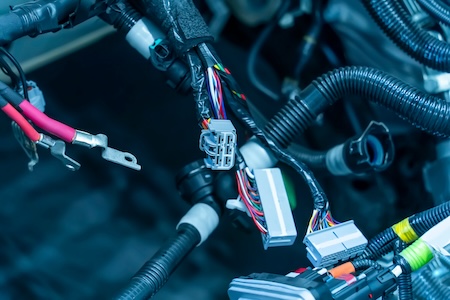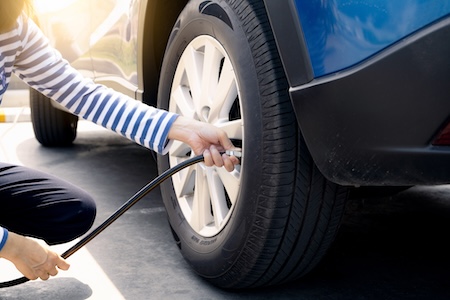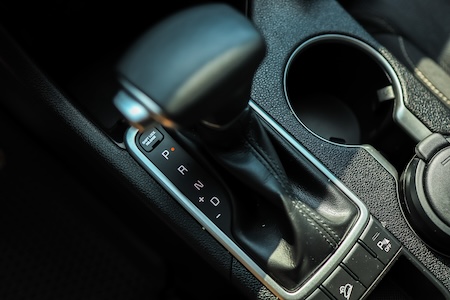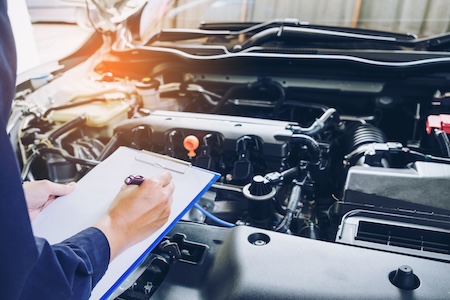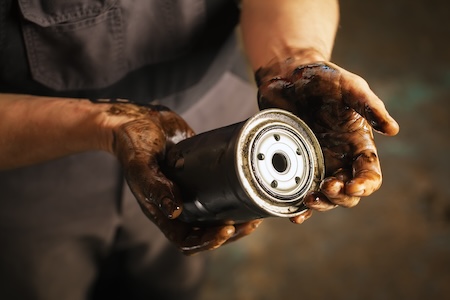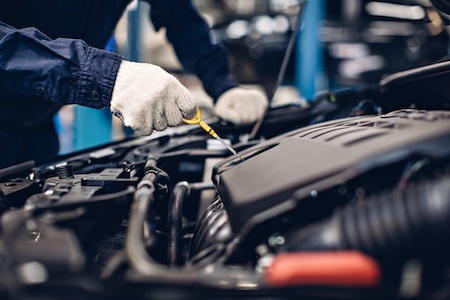While the headlines say gas prices are stable, you might shudder every time you pull into the gas station. The national average gas price is $3.59, and if you dream of road-tripping anywhere outside of Colorado, you can expect to spend a fair amount of gasoline to keep your car filled.
Rather than paying the price at the pump, you might dream of making your car more fuel efficient. Is there an easy way to improve fuel economy? Are there tips and tricks that can save you money every time you pull into the pumps?
What Fuel Efficiency Means
Fuel efficiency refers to how effectively a vehicle utilizes fuel to propel itself and perform its intended functions. Sounds easy enough. But there are a lot of nuances to it.
High fuel efficiency means a vehicle can travel longer distances using less fuel, while low fuel efficiency indicates that more fuel is required to cover the same distance. But there isn’t a “right” or “wrong” guideline to follow. If you drive a large SUV, moving from 10 to 12 MPG might seem like a massive improvement. If you’re already seeing 35 MPG or more, a one or two MPG bump might not seem like much.
Fuel economy is in the eye of the beholder.
Still, you know there are benefits. More fuel-efficient vehicles require less frequent refueling, resulting in lower fuel expenses over time. Vehicles with higher fuel efficiency produce fewer emissions per mile traveled, contributing to reduced air pollution and greenhouse gas emissions. Using fuel more efficiently reduces the consumption of finite resources such as oil and gas, promoting sustainability. All are worthy reasons for wanting to improve fuel economy.
5 Easy Tips For Fuel Economy Improvement
What if we told you that better fuel economy isn’t all about maintenance items for your vehicle? There are things you can do just with your daily driving techniques that wind up saving you money at the pump.
Obey Speed Limits
Driving at higher speeds increases air resistance, leading to greater fuel consumption. Obeying speed limits not only improves safety but also helps maintain optimal fuel efficiency. Keep an eye on speed limits and avoid excessive speeding, especially on highways where aerodynamic drag can significantly impact fuel economy.
Drive Evenly
Smooth acceleration and braking can improve fuel economy by reducing the energy required to move the vehicle. Avoid sudden accelerations and hard braking, as these behaviors waste fuel by increasing engine workload. Instead, accelerate gradually, maintain a steady speed, and anticipate traffic flow to drive more evenly and efficiently.
Pay Attention To Aerodynamics
Aerodynamic drag is a major factor affecting fuel economy, especially at higher speeds. Keep windows closed while driving on highways to minimize drag. Roof racks or carriers should also be removed when not in use to reduce aerodynamic resistance. You can improve fuel efficiency and reduce fuel consumption by paying attention to aerodynamics.
Buy Good Quality Gas
Using high-quality gasoline can contribute to better engine performance and fuel efficiency. Look for reputable gas stations that offer top-tier gasoline, which contains detergents and additives that help keep the engine clean and maintain optimal fuel system performance. While the upfront cost may be slightly higher, the long-term benefits in terms of improved fuel economy and engine longevity can outweigh the expense.
Keep At Least Half a Tank
Maintaining at least half a tank of fuel can prevent fuel pump problems and ensure optimal engine performance. Running on a near-empty tank can cause the fuel pump to overheat, potentially leading to premature wear and failure. By keeping the tank at least halfway full, you not only ensure the reliability of your vehicle but also help maintain consistent fuel efficiency.
5 Easy Tricks To Keep Your Car Primed For Better Fuel Economy
Okay, those are easy tips that can show real benefits in your fuel economy. Of course, the condition of your car does matter. Keep it in good working condition, and you will see a difference in your monthly fuel bills. Don’t worry; it doesn’t take a lot of work to keep it in good working condition. Start with these:
Check Tire Pressure Regularly
Proper tire inflation is essential for optimal fuel economy. Check your tire pressure at least once a month and before long trips, using a tire pressure gauge. Inflate tires to the recommended pressure specified in your vehicle’s owner’s manual or on the tire placard typically located inside the driver’s door frame. Underinflated tires increase rolling resistance, leading to decreased fuel efficiency.
Engine Tune Up
Regular engine tune-ups help maintain engine efficiency and fuel economy. Follow the manufacturer’s recommended maintenance schedule for tune-up intervals, which typically include checks and adjustments to ignition timing, spark plugs, and other engine components. A well-tuned engine operates more efficiently, resulting in improved fuel economy.
Air Filter Replacement
A clean air filter is vital for efficient engine performance and fuel economy. Check and replace the air filter according to the manufacturer’s recommendations or if it appears dirty or clogged. A dirty air filter restricts airflow to the engine, leading to decreased fuel efficiency and increased fuel consumption. Regular air filter replacement ensures optimal engine combustion and fuel economy.
Use Correct Motor Oil
Using the manufacturer-recommended grade of motor oil can improve engine efficiency and fuel economy. Refer to your vehicle owner’s manual to determine your engine’s correct viscosity and type of motor oil. High-quality motor oil reduces friction and wear on engine components, promoting smoother operation and better fuel efficiency.
Maintain the Exhaust System
A well-maintained exhaust system is essential for optimal engine performance and fuel economy. Inspect the exhaust system regularly for leaks, damage, or rust, and repair or replace components as needed. A faulty exhaust system can lead to decreased fuel efficiency and increased emissions. By ensuring the exhaust system is in good condition, you can help maintain fuel economy and reduce environmental impact.
Thinking of Improving Your Car’s Fuel Economy?
Improving your car’s fuel economy isn’t just about saving money at the pump—it’s also about responsible vehicle ownership and environmental stewardship. But then you know that, don’t you? That’s why you’re here!
Proper maintenance and efficient driving habits can lead to significant savings on fuel expenses over time. By keeping your vehicle in good condition and driving it responsibly, you can maximize fuel efficiency and minimize fuel costs.
Every drop of fuel saved translates to reduced emissions and a smaller carbon footprint. By maintaining your vehicle and driving it efficiently, you contribute to cleaner air and a healthier environment for everyone.
Regular maintenance not only improves fuel economy but also helps extend the life of your vehicle. By addressing issues promptly and following recommended maintenance schedules, you can avoid costly repairs and keep your car running smoothly for years to come.
All are perfect reasons for getting more in tune with your vehicle.
Need a little help? That’s why we’re here. Stop by or give us a call – we’ll help you take care of your car for life.



